Semantic Search: The Hidden Power for High Rankings
Search engine optimization has come a really long way from what it used to be at the beginning. It’s gotten more complicated, and now you need to remember more rules and do more with even less guarantee.

Yet, there are some great, future-proof tactics. What are those? Semantic search to begin with.
Wondering what that means and how to use it? No worries, we got your back. In this guide, we will cover everything from the semantic search definition to some semantic search tools you can use for better results.
What Is Semantic Search?
Semantic search is a type of search that focuses on more than the keywords. It tries to ‘understand’ the real intent and meaning behind your query.
This type of search takes into account the context and connections between the words you google. It tries to comprehend what you really mean and makes sure you get only the answers that best align with your search queries.
Broad Search Query
So, for example, say you’re typing ‘Eiffel Tower’ in your search. Because it is a rather broad query, Google doesn’t know for sure whether you want to visit it or you’re writing a research paper on the most popular tourist attractions around the globe.
That’s why you will get a wide range of information:
- Sponsored tickets & tours (in case you’re visiting Paris).
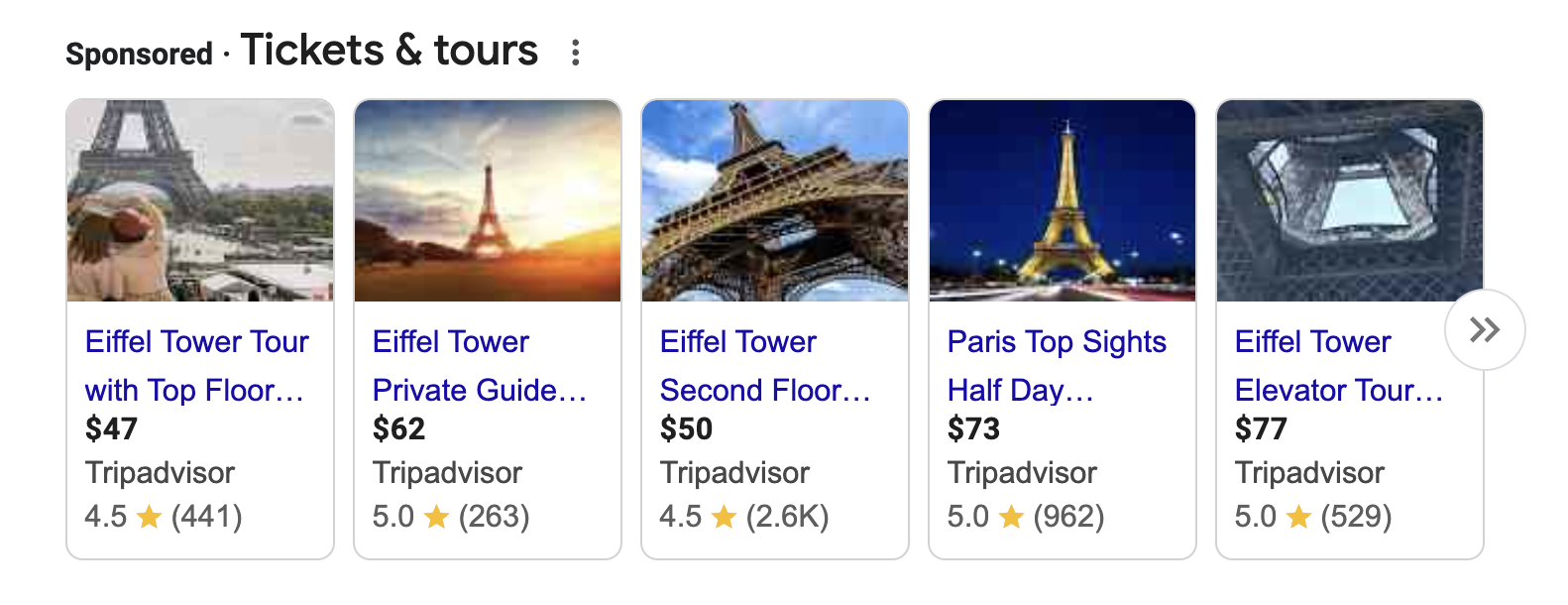
Source: Google
- A generic summary with some pictures, reviews, map location, tickets, and a weather forecast.
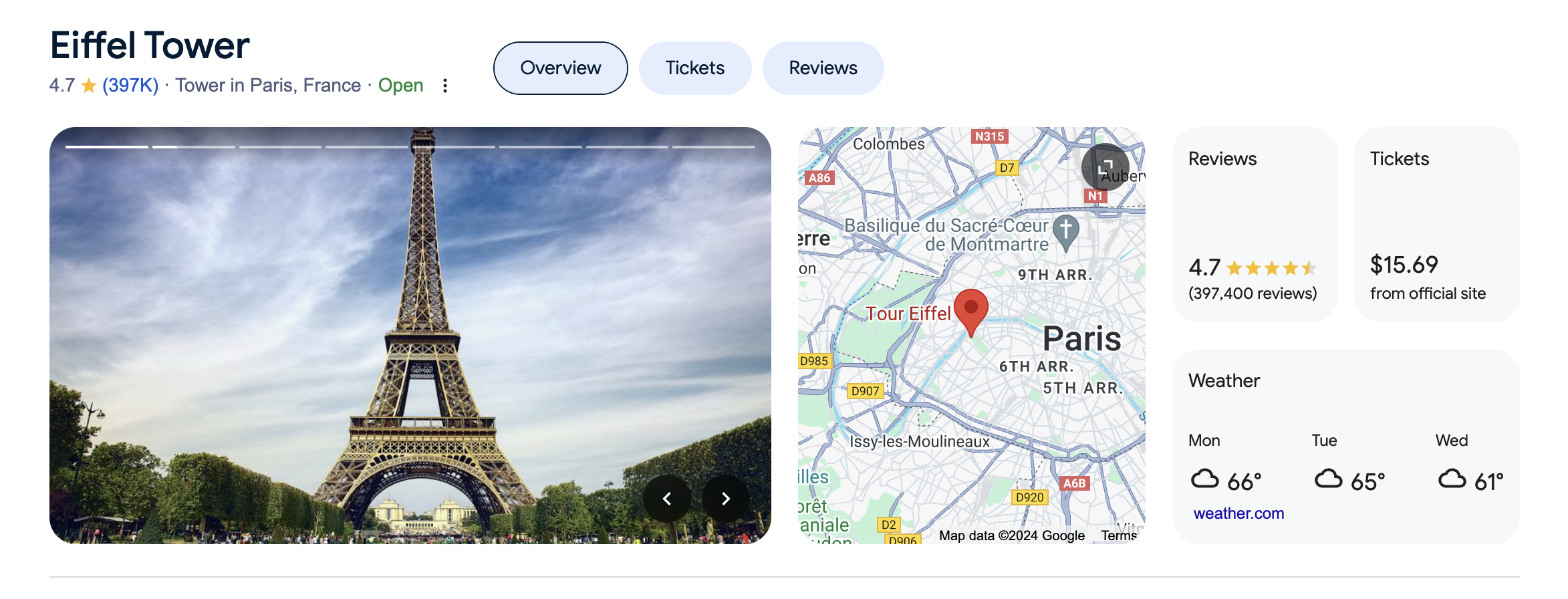
- The official website, ‘Things to know’ compiled by Google, more tickets, and the ‘About’ section with all the basic facts about the attraction.
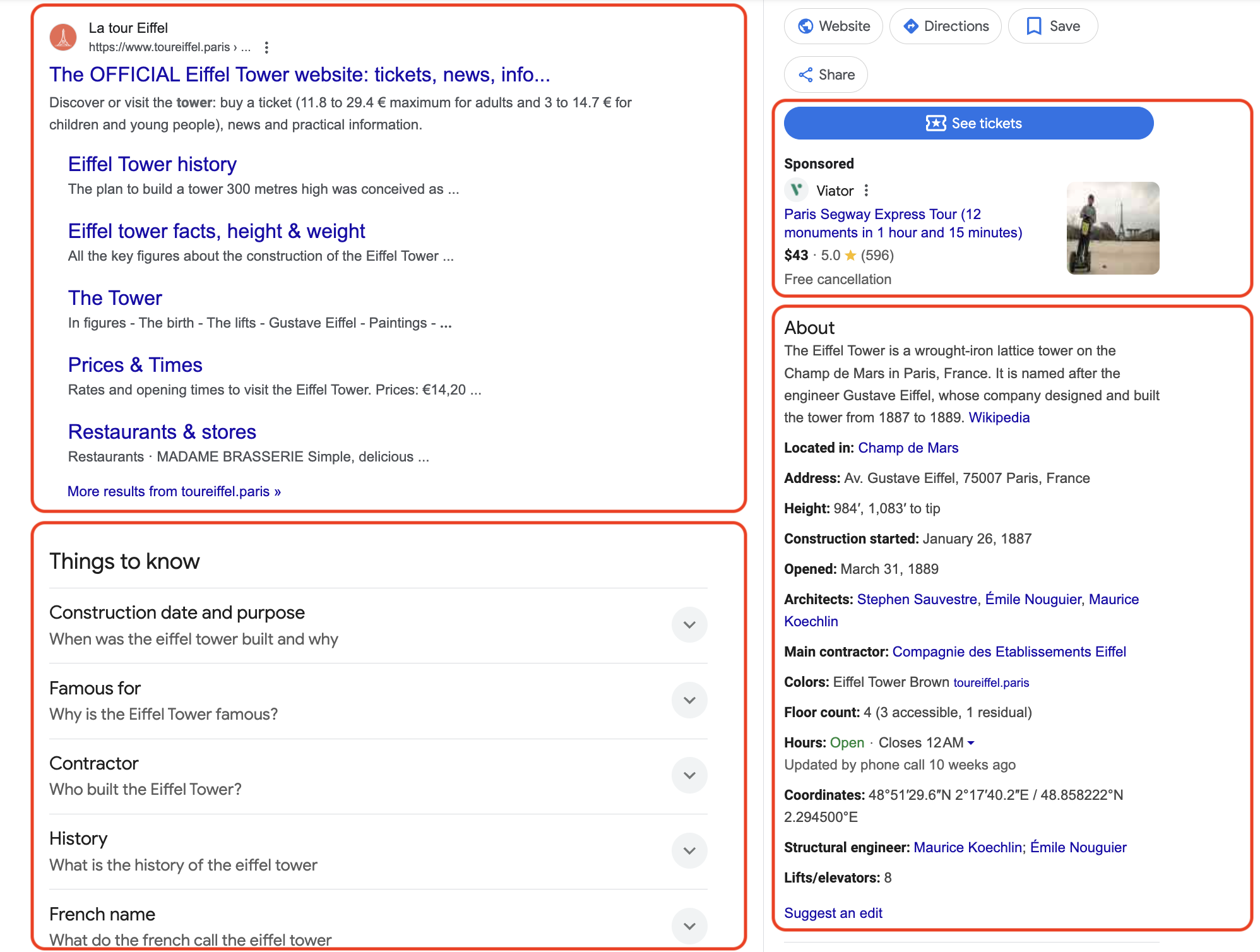
- A Wikipedia page dedicated to the Eiffel Tower, a ‘People also ask’ section, more websites that either give generic information about the Eiffel Tower or sell tickets, images, popular times to visit it, more admission ticket sales, and even a 3D model of the tower.
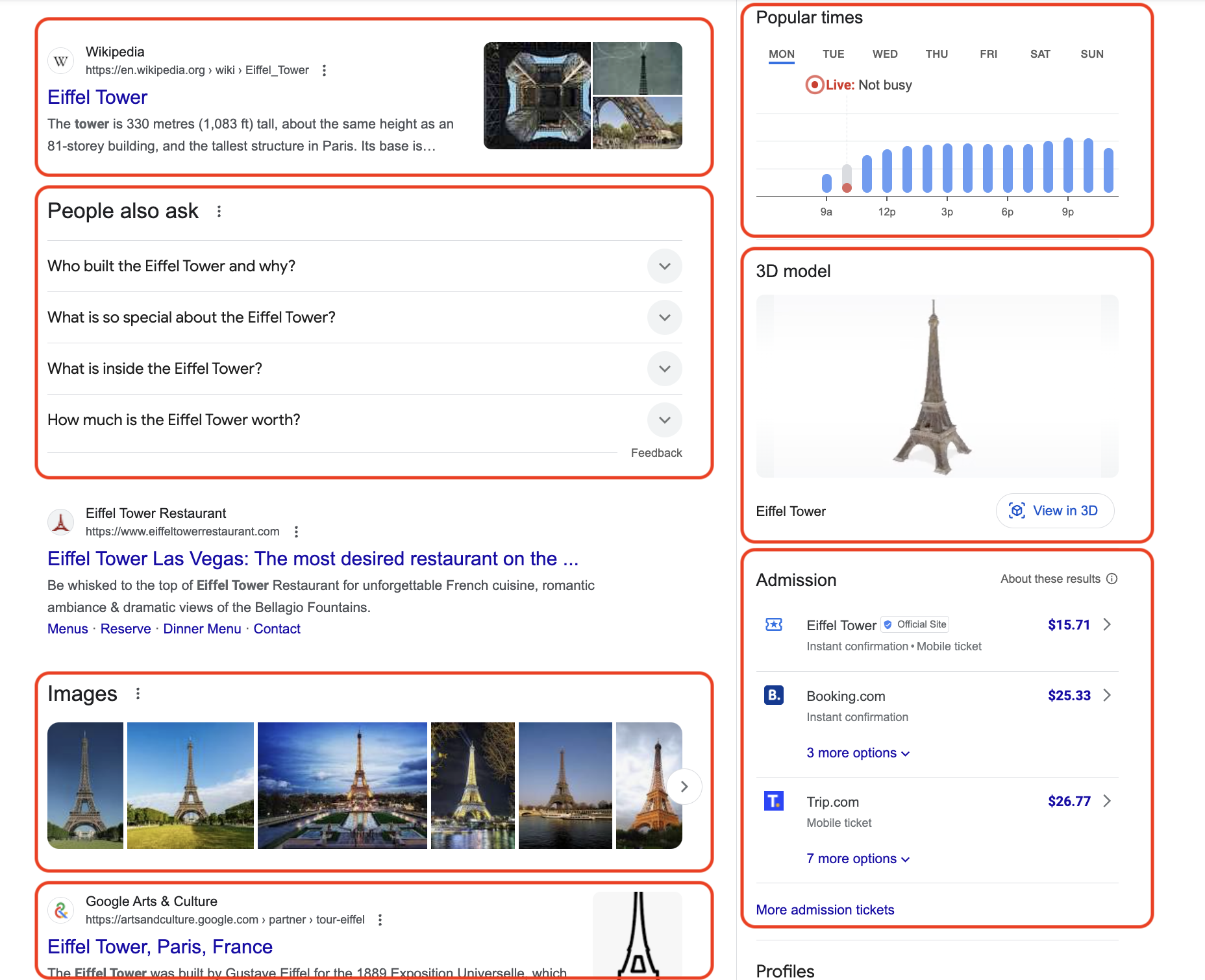
- Top stories with the recent news, a Tripadvisor page to help travelers, experiences you can try if visiting Paris, the ‘Eiffel Tower Person’ section for those interested in history, and Google reviews.
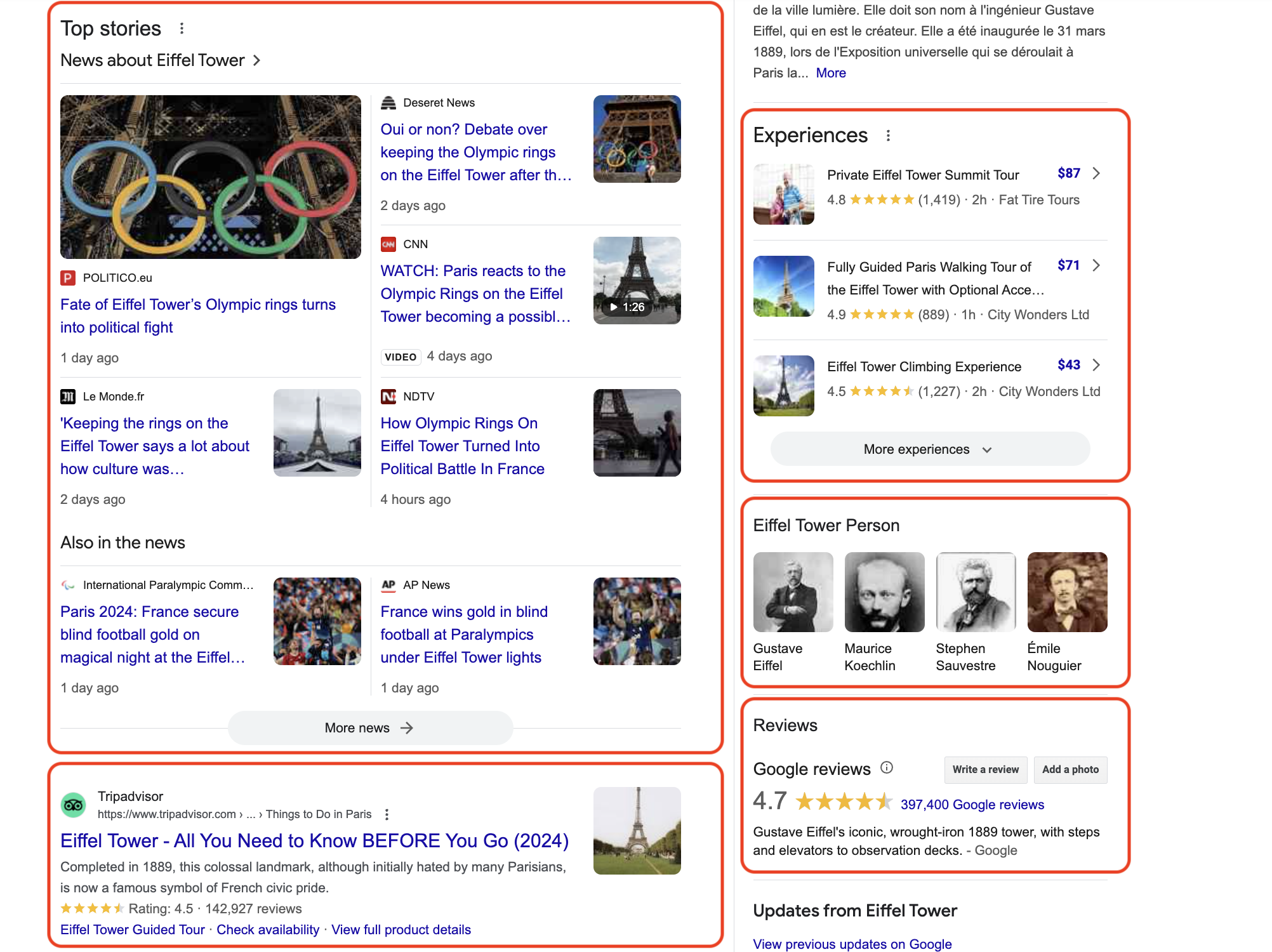
As you see, when we go for a very broad query, Google tries to guess our search intent as well as it can. That’s why we get a variety of information.
Just because algorithms aren’t entirely sure what you want, you even get an Eiffel Tower restaurant page in Las Vegas (if googling in the US). Note: You can see this in the screenshot above, right under the ‘People also ask’ section.
This is a great example of semantic search results and how they can provide more comprehensive information to cater to most requests users have.
Specific Search Query
Remember we said that the whole idea behind this search is how it tries to understand the context (i.e., the meaning) of each query? Now, let’s see how it works in practice when searching for a specific thing.
Say we’re googling ‘hotels with Eiffel Tower view.’ Will we get all that genetic information about the Eiffel Tower’s location, history, height, and tickets? No, because the search algorithm understands that it isn’t what you need at this very moment.
Instead, you’ll get a map with different hotels that have the Eiffel Tower view, blogs that offer a compilation of the best accommodations, and either some booking or review pages that can help you filter such hotels.
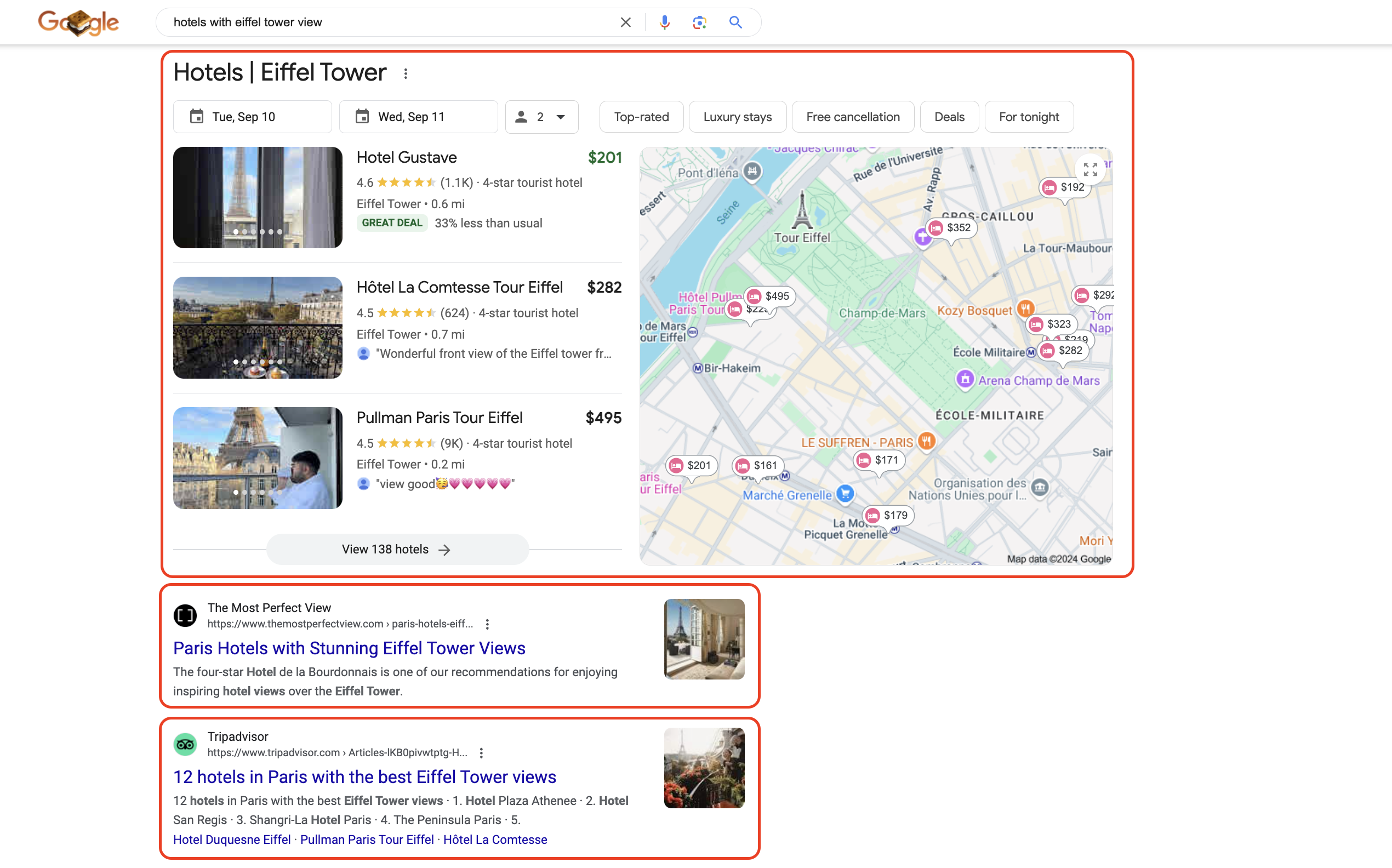
Source: Google
The same thing happens if you try to look up anything really, whether that is a celebrity, a food recipe, or a movie character. These semantic search examples show us how far the search tech has come.
Now, the best part is that it doesn’t only work for tourist attractions and movie stars but also for businesses. So, your ability to attract your target customers depends on how much you can tweak your website to fit into the parameters the search engines will be looking for.
How Does Semantic Search Work?
Learning about semantic search meaning is only one piece of the puzzle. Next, you have to understand what really goes on behind the scenes. This helps you get a bigger picture so you can get the most out of your SEO efforts.
For the results to be accurate, the search engine has to understand the search relevance or how a user’s query matches the information available in its datasets (aka Knowledge Graph).
Google has the biggest knowledge graph out of all search engines, and what it does is collect information from as many sources as possible. Then, it considers the contextual factors like your location, search history, etc.
By evaluating these aspects and your previous patterns, the algorithm can show you different related and relevant information about whatever you are looking for.
Here is a simplified example of how a Knowledge Graph works:
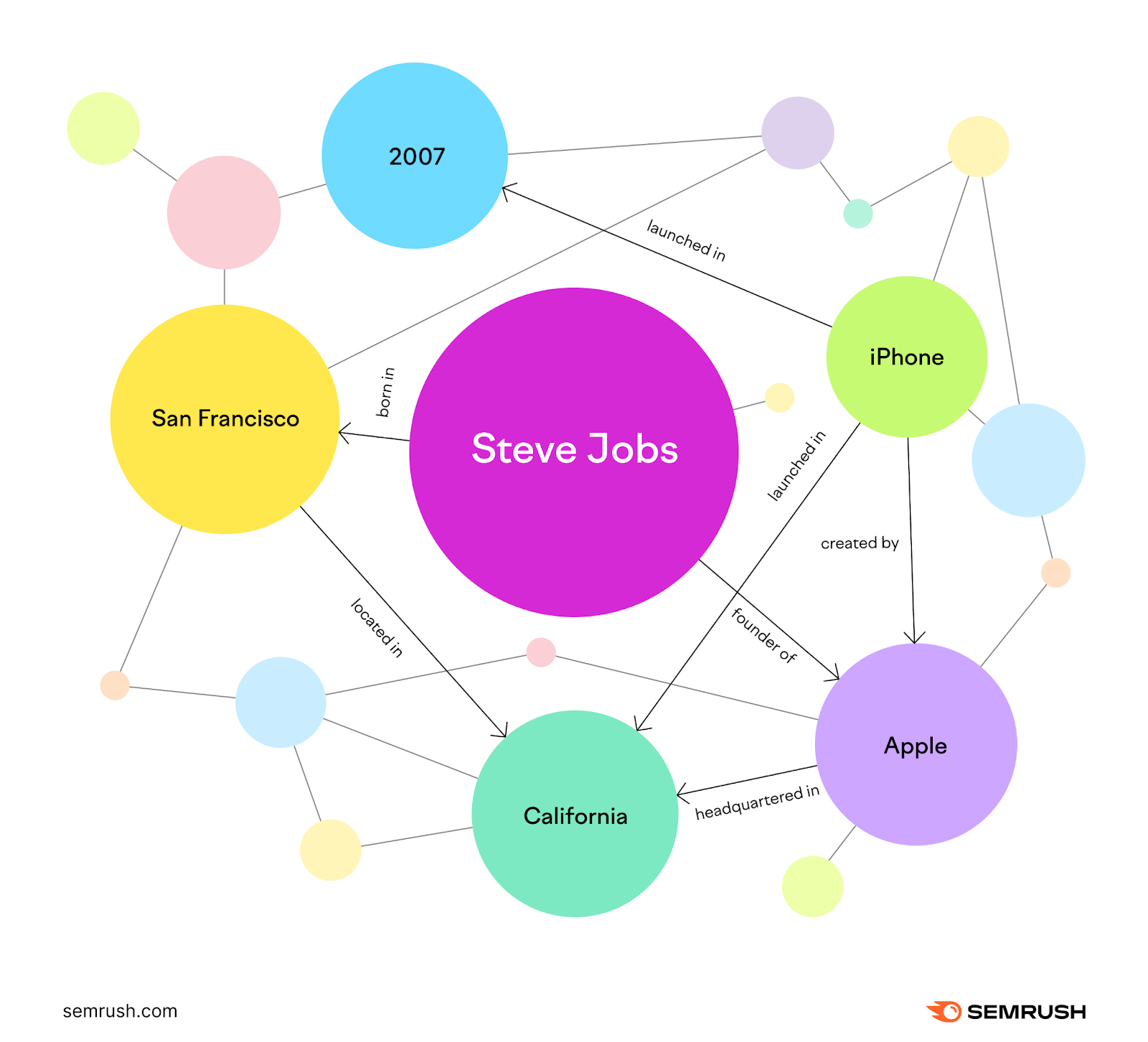
Source: Semrush
To do this, the semantic search algorithm relies on AI, ML, and NLP to break down your words into key ideas and understand what you want to know.
How does this work in real life?
For example, if you’re searching for ‘a new movie with an actress who played in Gossip Girl,’ Google has to break this down into ‘new movies’ + ‘actresses from Gossip Girl’ and try to find a match. As you see, it is pretty good at this:
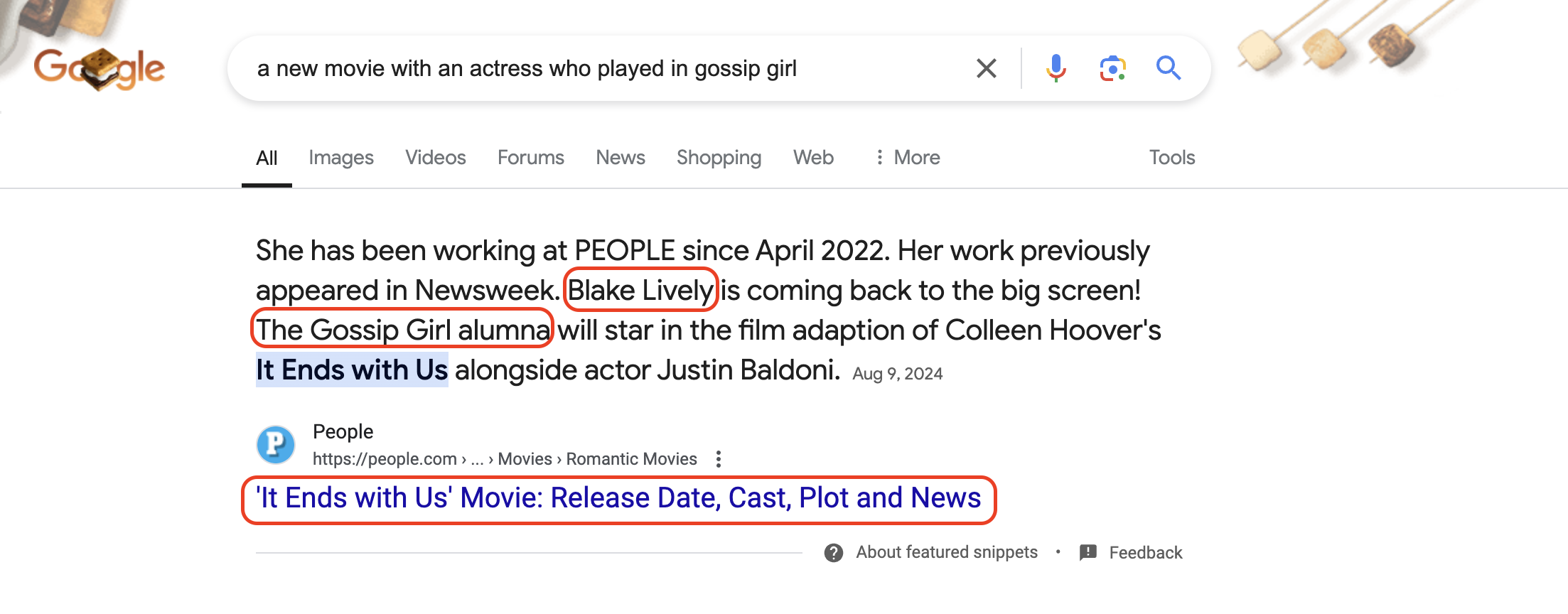
Source: Google
Now, let’s say you are trying to search for ‘Italian pasta without meat,’ a semantic search engine will understand that you’re looking for a recipe, even though you don’t really specify this.
Besides, it will look for the synonyms (e.g., ‘vegetarian’ and ‘veggie,’ in addition to ‘without meat’ & ‘spaghetti,’ in addition to ‘pasta’ & ‘Neapolitan,’ in addition to ‘Italian’).
As a result, you’ll get a number of Italian recipes to cook a pasta with no meat:
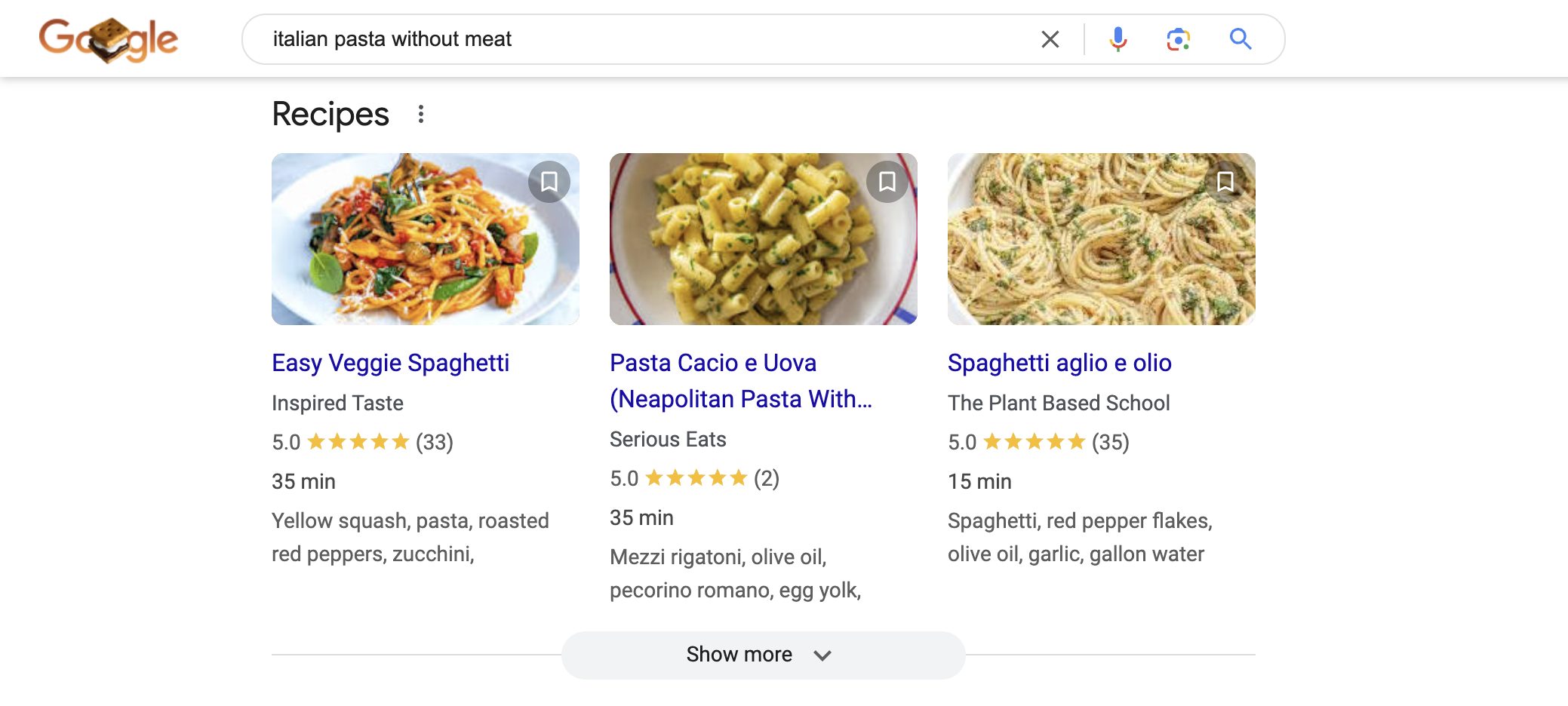
Source: Google
Also, pay attention that none of these results actually say ‘Italian’ or ‘without meat.’
These semantic search examples clearly show us that the algorithms don’t just rely on keywords; instead, they try to grasp the context. Speaking of which, how is keyword search different?
Semantic Search vs. Keyword Search
At this point, you may be wondering how keyword research fits into this picture. Well, let’s look at the two a bit more closely. So, imagine you are tracing the journey customers take to find you.
They enter a specific phrase or search term to find products or services like yours. This is what’s known as keywords.
Keyword searches focus on finding web pages that match the exact words used in the customer’s search. So, the search engine returns results that just feature the phrases used, and some may even appear in the wrong context.
Compare that to the semantic search example earlier, where the search algorithm is more geared towards understanding not just the question but the search intent as well.
For example, let’s imagine you’re looking for a ‘car polishing machine.’
A keyword search would only find products and pages that match this exact keyword (e.g., Top 10 car polishing machines).
Yet, a semantic search will go two steps ahead – it will:
- Find synonyms for a ‘car polishing machine,’ such as ‘car buffers,’ ‘polisher,’ ‘orbital buffer,’ ‘orbital polisher,’ ‘car polisher,’ etc.
- Try to understand whether your query is informational, transactional, navigational, or commercial to serve you the best answer directly. In this case, it realizes that the intent is commercial, so it shows products in different stores instead of the history of this invention.
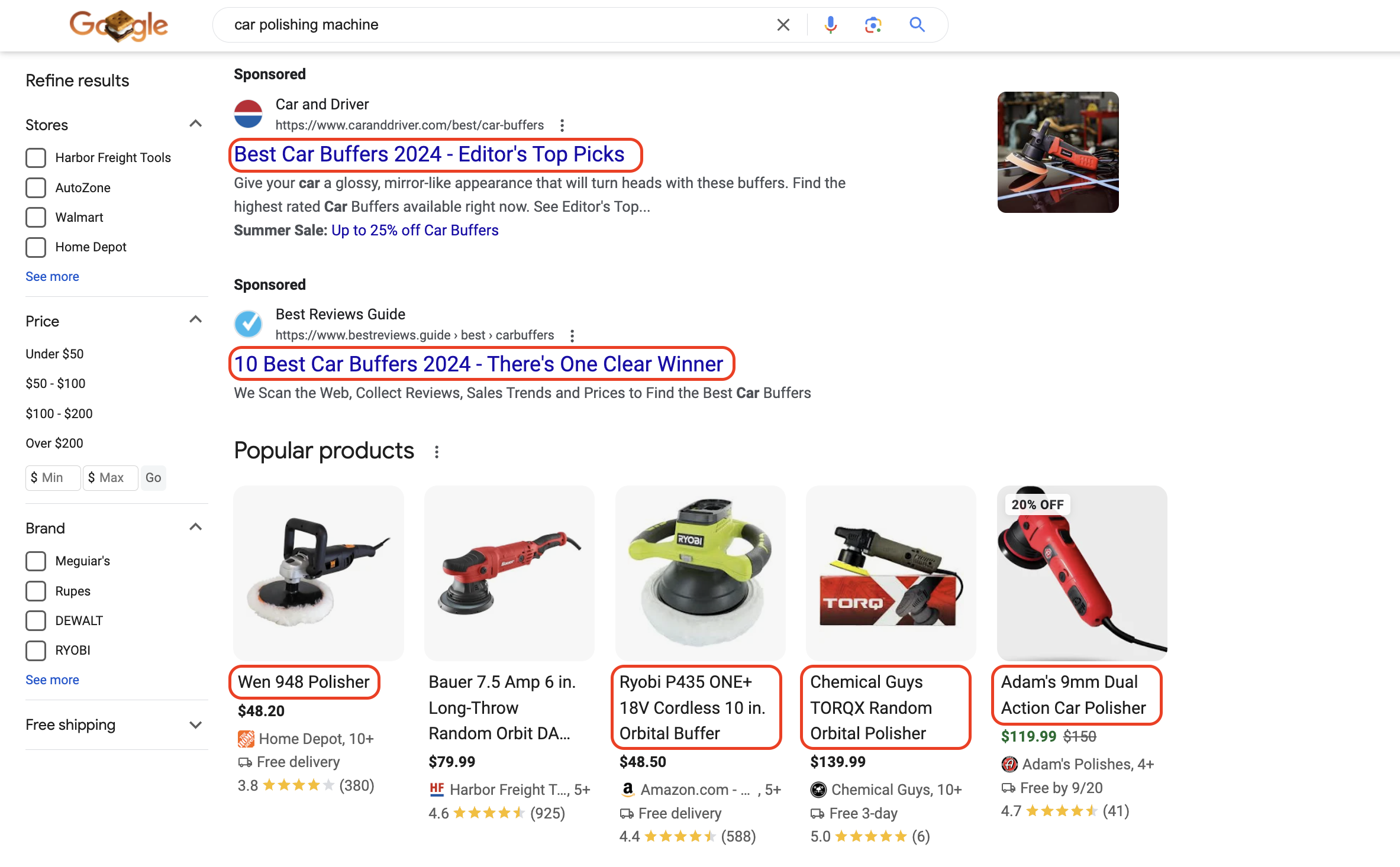
Source: Google
Pro tip: This is why keyword stuffing doesn’t really cut it these days. You have got to provide more value in your blogs. Sometimes, you might need to use a keyword once or twice to rank for it – as long as you match the search intent and deliver relevant and unique information.
What Are the Benefits of Semantic SEO for Your Rankings?
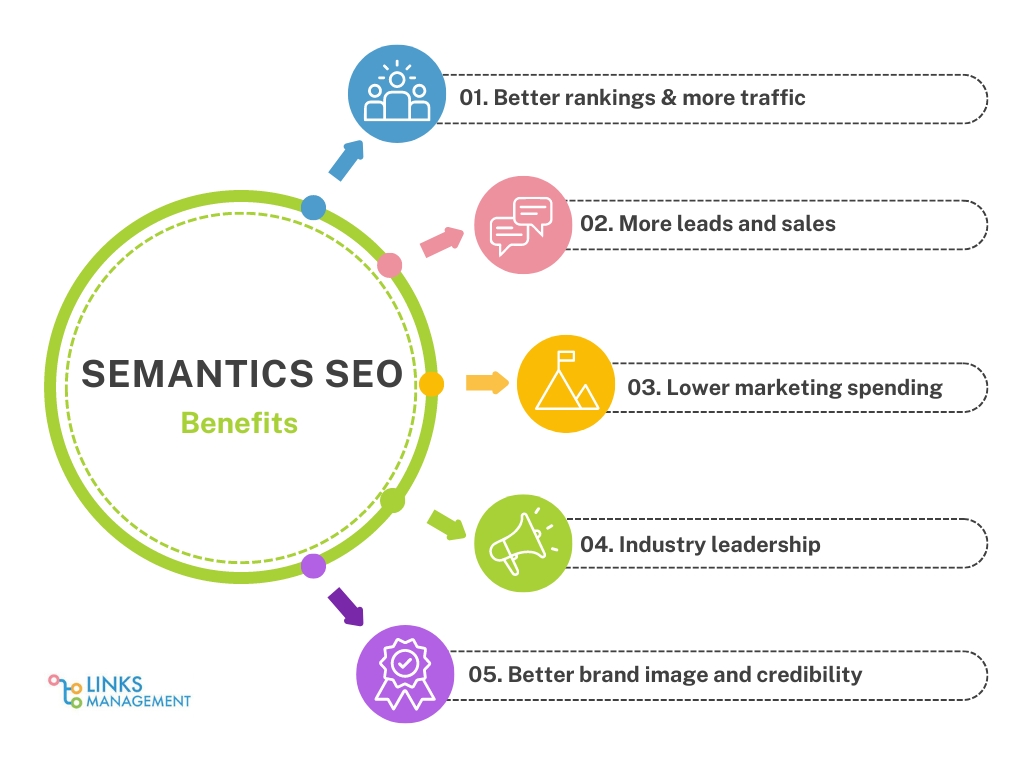
Now, why should you care about semantic SEO? The answer is simple – if you manage to get it right, you will end up with a lot of benefits that will help you grow and promote your blog:
✅ Pull More Traffic
There is a strong link between the volume of site traffic and search rankings. Every marketer wants to pull more traffic and get their clickthrough rates up.
Yet, with a semantic search engine, this is only possible if your content is actually useful and answers the burning questions your target audience has about your products, services, and industry.
✅ Raise Your Leads and Sales Rates
Only 29% of websites manage to attract leads and successfully convert them. By getting on board with a semantic SEO strategy, you will be able to be among the lucky sites. How?
Well, your product pages can get to appear in front of people who are already looking to buy. So, you can get more leads that are warmer, thanks to your relevant content.
✅ Cut Down Your Marketing Budget
Marketing isn’t cheap, even if you are using SEO tactics. Still, you get to lower your marketing costs with semantic search engine optimization. How does this work?
All the content you create ends up piling up, covering whole keyword clusters and turning you into an industry leader and an important voice.
Of course, this is easier when you have a good semantic SEO tool to track your progress (more on this later).
✅ Revamp Your Brand Identity and Credibility
Semantic SEO has a way of helping you rank for brand target keywords. Guess what happens when people begin to see you as the best place to go for all searches related to your product or services? Yeah, you become an expert.
The same thing happens when you start ranking higher for relevant long-tail keywords in your niche. Your brand authority gets a boost.
As a result, people trust you more, while other blogs begin to reference you in their own articles (via backlinks). Soon enough, search engines will consider you as an authority and reward you with even better rankings.
3 Steps to Create Content That Aligns With Semantic Search Algorithm
By now, you realize that creating your content with semantic searching in mind is much more sustainable for your business growth. So, here’s how you do it:
#1 Write for People, Not Search Engines
The whole idea of semantic search is to find the most helpful content that addresses every query of every user. So, if your strategy is heavily relying on keyword optimization, toss that strategy.
Google has been sticking to its people-first search for years now. That’s why you have to prioritize natural language and think about your users’ needs.
Put yourself in their shoes, what would you want to know?
Besides, you can incorporate more long-tail keywords. If you use words closer to what your customers will type in when searching for your products, you improve your chances of showing up in their SERPs.
Not only are you being more specific, but you’re also more aligned with users who fit your target market and who need what you are selling.
For example, instead of (or in addition to) ‘best gardening gloves,’ try ‘best gardening gloves for rose bushes under $20.’
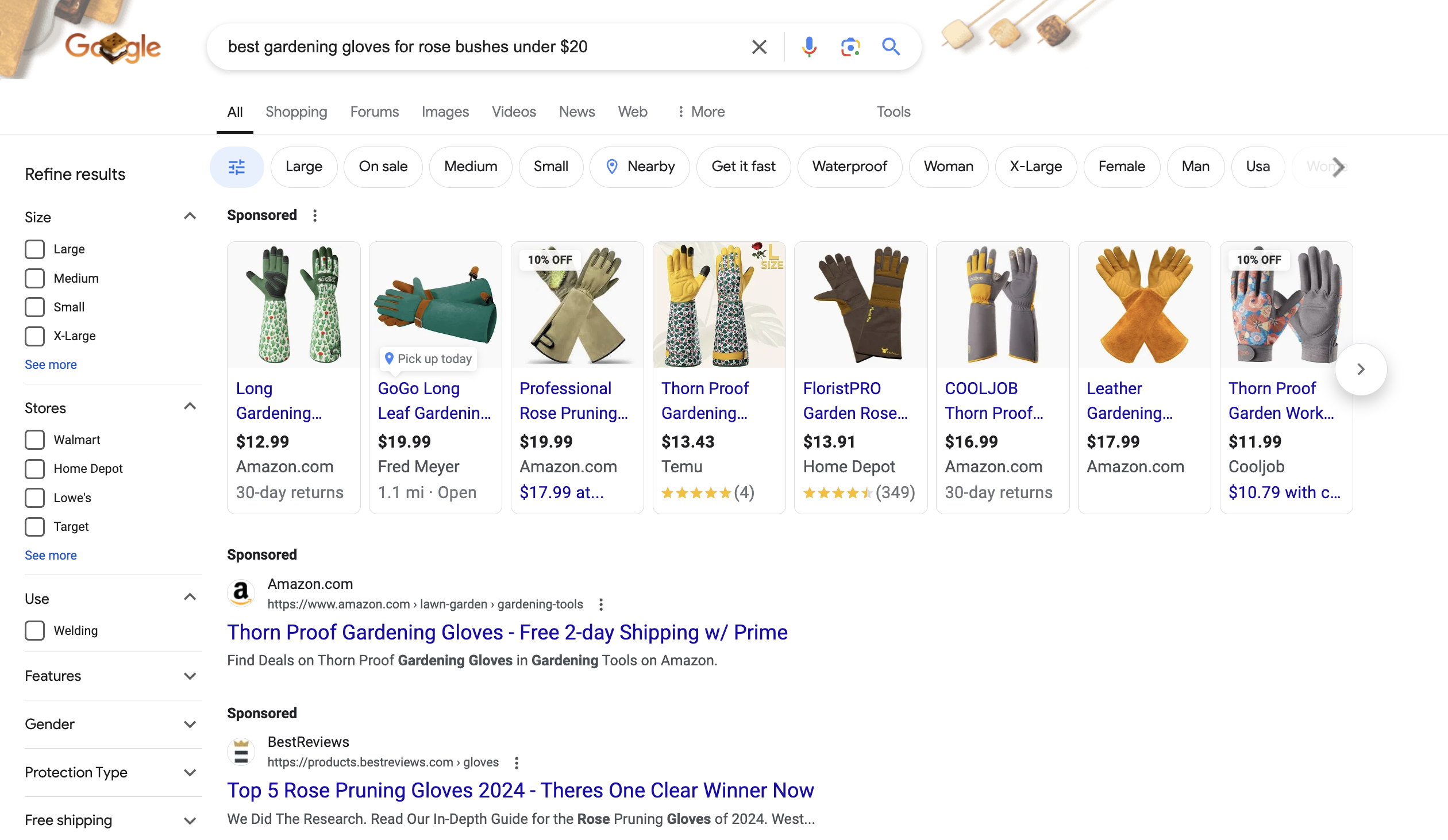
Source: Google
The beauty of semantic search engine optimization is that you don’t need to stuff your page with this keyword – you can simply mention it when it makes sense (even if it’s just once).
And, of course, try to make your content as skimmable and easy to read as possible. This will help both search engines and your website visitors. First of all, go for natural language that people actually use in everyday conversations (and their search). But also:
- Use bullet lists and numbered lists to structure your blogs;
- Add quality media/images/infographics/SM posts to your content;
- Structure your sentences to directly answer customer questions (FAQs);
- Prioritize active voice.
#2 Create Topic Clusters
Topic clusters are a great hit with semantic search SEO algorithms because they create a logical connection between different posts. This way, it is easy for the bots to understand your site better.
Besides, it is a great way to rank higher for a variety of keywords, especially if some of them are too competitive.
So, don’t focus on brand content or commercial content alone. Instead, use topic clusters when writing blog posts.
How can you choose these topics? Try to think like your customer:
- Uncover what your clients really want to know about your products or niche and incorporate keyword research;
- Find new ideas around your keywords and create how-to guides, comparisons, case studies, etc.;
- Make sure your content is interconnected and interlinked.
The idea is to fill any content gaps you or your competitors may have missed earlier. By plugging up knowledge gaps, you make your website appear as an authority in your niche.
Apart from industry leadership, this will also help you improve your semantics search rankings. After that, you can see the compound effect of all your efforts. And maybe (just maybe) you can become this otter someday 🙂

Source: @garethaboyd on X
#3 Take Backlinks Seriously
One of the perks of semantic analysis SEO is that search engines look for information from many places and try to provide the fullest picture. By design, algorithms understand multiple references to the same query.
That’s why if you have a strategic link-building plan (both internal and external), you make everything easier for search bots. Besides, you create a better reputation for yourself (when choosing quality sites). So:
- Use internal links to connect similar topics and themes;
- Use external links to provide additional context to your content;
- Improve your backlink profile to get your domain rating up;
- Get listed in high-quality relevant directories;
- Share your content on your social media channels to rack up social signals.
Apart from this, you need to ensure that the structure of your website is organized – this is where schema markups come in handy. Create rich snippets and knowledge graphs. This will help search engines understand your content better and improve your rankings.
Bonus: Top Semantic SEO Tools for Analysis
The truth is that pretty much any SEO tool can help you with semantics. But let’s see some of the easiest solutions for your semantic SEO automation.
- Google Keyword Planner gives you a list of keyword ideas for every keyword you provide. While it isn’t a perfect tool, it is a good start if you are on the budget (free);
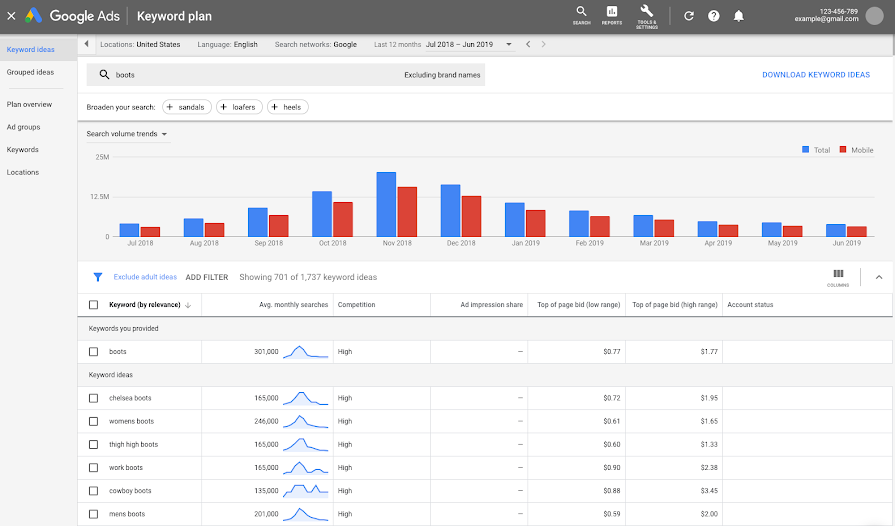
Source: Google
- The ‘People also search for’ section is another way to get some extra ideas for your semantic strategies. It can help you understand what topics to cover based on your keyword. These suggestions can almost become the headings in your blogs (free);
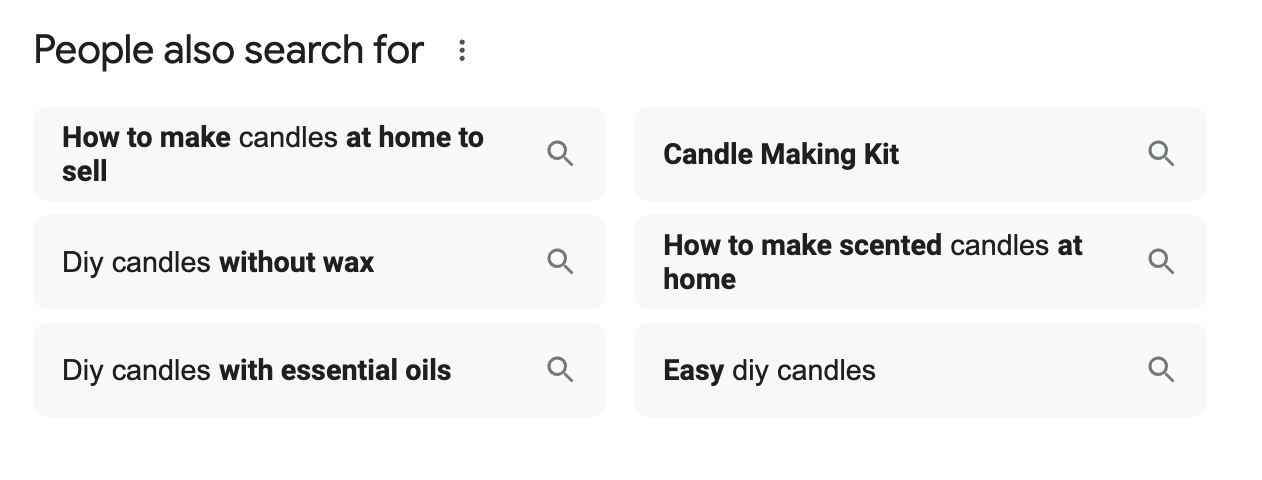
Source: Google
- Semrush has a so-called Mind Map that creates keyword clusters that revolve around your seed keyword (paid);

Source: Semrush
- Surfer SEO is almost doing SEO semantic analysis for you. With their Content Editor feature, you get a long list of related phrases and words after adding your main keyword.
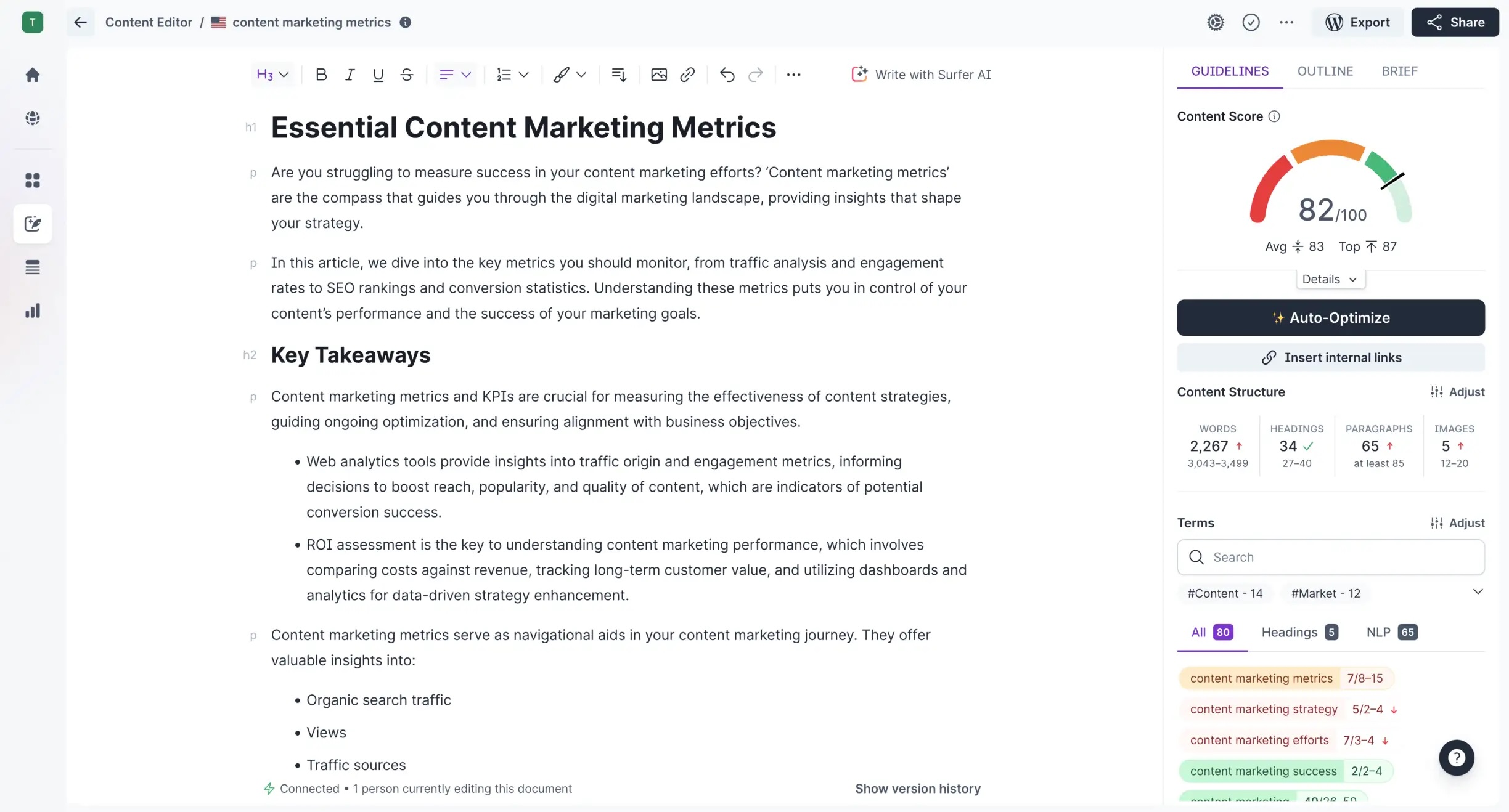
Source: Surfer SEO
Semantic search technology has come a long way, so your options are not limited to what’s on this list. That’s why consider your needs and then do your own research before choosing any tool.
Conclusion
Getting your site to be semantic-SEO-friendly is a gradual process. Some days, you will feel like you know what you are doing and everything is under control.
Other times, you might need to call in some professional help. This is normal. As long as you are focused on the bigger picture (providing the best value to your customers), you will be able to hit your goals.
Enter URL & See What We Can Do Submit the form to get a detailed report, based on the comprehensive seo analysis.





